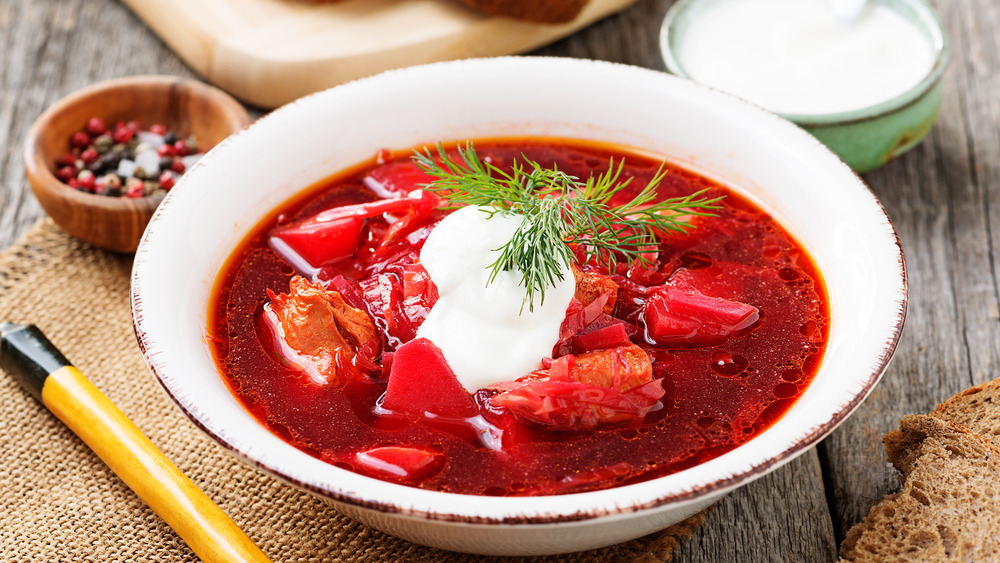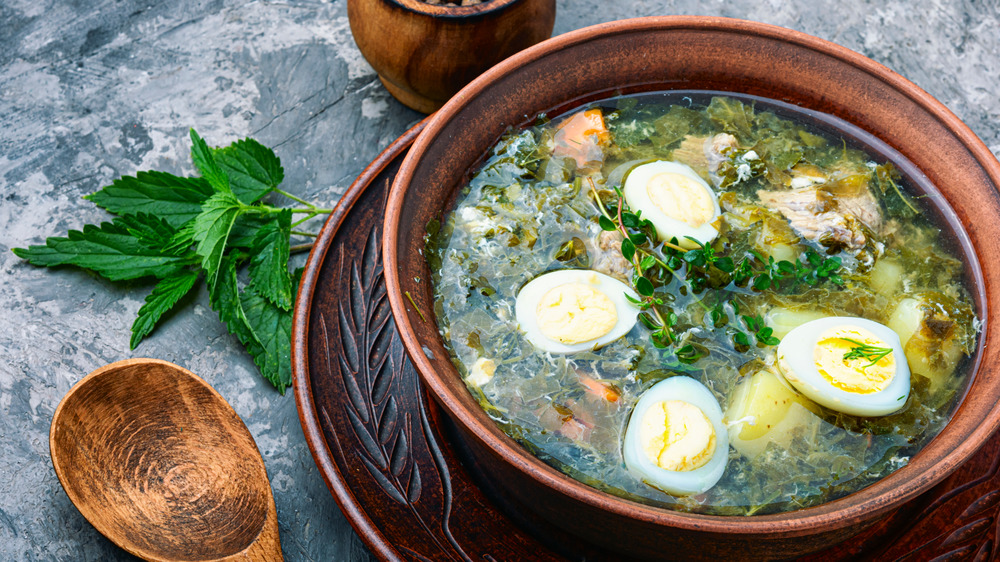Everything You Need To Know About The Different Types Of Borscht
Gertrude Berg gives a comical insight into the weather-predicting capabilities of borscht in The Molly Goldberg Jewish Cookbook: "Borscht is more than a soup, it's a weather vane. When my family says they want hot borscht I know winter is coming, and when they want cold borscht I know how far can spring be behind?" (via Quotations by Women). Thanks to the former actor's quip we know that borscht can be served up warm or cold, but, it turns out the versatile soup can also be made a number of ways.
According to the New Yorker, a typical way to make borscht in the Ukrainian style starts with simmering oxtail with vegetables in water for hours. Onion and carrots are cooked in fat and tossed in as well as tomatoes, (light-colored) beetroot, potatoes, and kidney beans. Shredded cabbage is added to the mix to bring some crunch, and salt-cured pork is thrown in to bring about extra flavor. Add some sour cream and fermented dill, and you've got yourself a standard bowl of hearty winter borscht. But, of course, there's more than one way to prepare this international soup.
What's in the borscht depends on where the kitchen is
There are hundreds of variations of borscht, according to The New York Times. Though the soup is typically made with a meat base, like beef and smoked pork, vegetarian versions do exist. In other versions, fish or even goose is used. The key factors that make borscht, well, borscht, are the presence of beets and the balance of sweet and sour. The New Yorker details a number of variations dictated by location factors such as land, weather, and traditions. One early 19th-century soup fit for a Russian tsar was made from three stocks: veal, morel mushrooms, and goose combined with dried prune. The borscht included sour cherries for acidity instead of tomatoes, which were uncommon at the time.
In Poland, there is a Christmas version that calls for mushroom-filled dumplings, sauerkraut, and sometimes apples, while in parts of the Ukraine and Romania Mirabelle plums and apricots are used. In Moldova, polenta is incorporated, and chili can be found spicing up Georgian and Azerbaijan borscht. As springtime approaches in Eastern Europe, the soup that kept its inhabitants warm throughout the chilly winter months is replaced with a cold version known as green borscht that combines hard-boiled eggs with sorrel, garlic, nettles, spring onions, and peas, proving once again borscht knows no limits.

